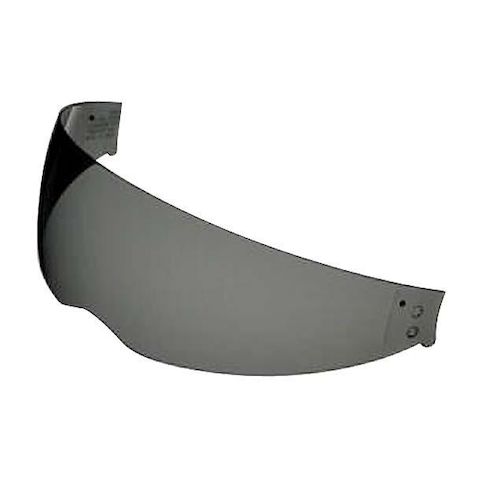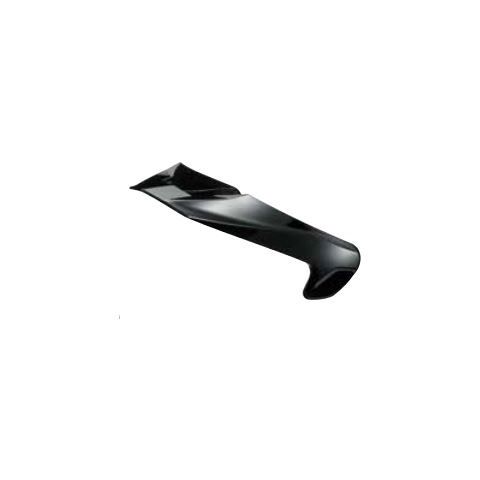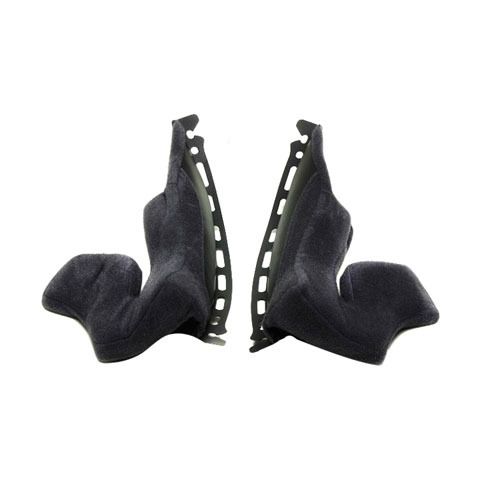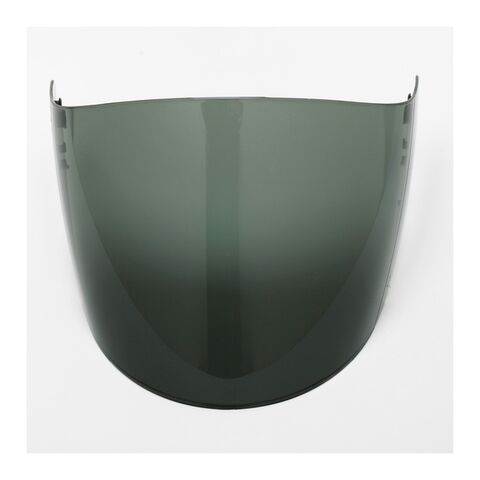Helmet is the long awaited replacement for the very successful J-Wing. The Shoei J-Cruise Helmet utilizes many of the components and technologies, like shell construction, integrated sun visor and venting schemes, from currently successful helmets with the result being a state-of-the-art, high tech helmet with the freedom of the open air.
Welcome to our detailed breakdown of the new Shoei J-Cruise Helmet, available at RevZilla.com.
So the J-Cruise, at a thousand feet, is Shoei's next foray into a premium three quarter helmet. We've seen the RJ-Platinum, before that we saw the J-Wing. These are different helmets that were configured slightly differently. This is using a lot of the new upgraded features from Shoei, including their internal sun visor. Part of that sun visor family, but really looking North of $400.
So again, it's going to stand toe to toe with some of the other super premium three quarters on the market. And honestly, in my mind, I think there's only one, and I won't mention them by name. Love to hear your gut reaction on the new J-Cruise. Leave it to us in the comments or on the product page. Subscribe to us on RevZillaTV to stay up to the latest. [inaudible 00:00:48] reviews are constantly rolling out.
Now, before I go foundational and work with some of the nuances all the way up to the helmet, let's talk a little bit about fit here on the J-Cruise. Intermediate oval head shape. What that means is there's no surprises, and if you wear a showy helmet right now, you shouldn't have any issues. This is a size large, weighed in at 3 pounds, 6.4 ounces, no surprises there either. And it's going to be DOT rated not Snell, so their saving some weight, but again you're not getting that Snell rating. And a lot of times you wouldn't see a Snell rating on an open face helmet anyway. So keep that in mind.
And remember, if you're scared about buying the Shoei J-Cruise on the Internet, don't worry if you need to buy it from us. We ship for free, exchange for free, no re-stock fees if you need to send it back to us. Try to take the guess work out with the video, and then don't worry if you get it wrong. We'll help you make it painless on the swap-out for a different size.
Now, as we dive back into the J-Cruise helmet, the first thing I want to note, changes on the helmet. Now we're using the premium QSV-1 sun visor system here on the J-Cruise. Optically correct, fog-free, retractable, operated with a very easily found slide on the side. Same as the Neotec, same as the GT-Air. Again, it's cable operated so it's very smooth. No clicking, you can see it as it drops up, comes down there. Again, gives you plenty of coverage, and is replaceable. Really nice touch. Nice to see that integrated.
Now if we look at our AIM shield, fiberglass, carbon fiber resins. It's going to be very lightweight. It's not a polycarb shield, this is an upgrade from Shoei. You're also going to see on the J-Cruise that we have this band. This band in the front. As it kind of wraps around. That band allows them to stay aerodynamic, but it bulges to accommodate sun visor outer shell EPS. So you're not giving away anything by way of production here in this multi-density shell when you have that bulge. So again, same level of protection, it looks good, they've styled it in. But again you have that bulge to accommodate the sun visor, and we see it on the GT-Air as well.
Other key features. I think it's the J-2 or the JW-2 shield. I'd have to check the site. But notice the locking mechanism. It's this small detent [sp] on the bottom that just taps right into that molded injection-mounted piece right there. So you're going to see it from the side. Again, a nice upgrade here in the J-Cruise. We've never seen a locking mechanism like that.
If I had to gripe, there's no detents. There's a detent on the top that locks it in, but there's no detents all the way around. But if you notice also on the shield, they gave you, based on their last model of three-quarter, you have an extra centimeter. 10 millimeters here on the bottom that create this air dam. They help with buffeting, they help as a lift to deflect lift wind or moisture. As it's coming in on the shield you can see the side profile here of it really, really nicely. But as you look at it, again, it adds a little bit of flash, but it is a very functional piece.
Moving up, double-walled construction in the eye port gasket. That is new. We see it on the GT-Air. Single wall even on something like the Neotec. Again, they're taking a step forward to say, hey, if you get caught in the rain we want to make sure that you have the best chance to have a nice seal there. And even when it's locked down and in, you're going to see that spring-loaded piece on this hinge, which sucks the face shield in and gives you that nice and tight seal from Mother Nature.
So keep in mind as well that you see these pin lock posts. The J-Cruise helmet is going to come pin lock ready, and it will take the same pin lock that we see available for the Neotec or for the newer helmets. And you'll see it listed on the site. And that's a pin lock lens you buy separately. And pin lock lens is how you use the laws of physics to stay fog-free forever without any coatings that might wear off. Nice touch.
Moving into the vent scheme. New ventilation scheme for 2013 from Shoei. We're seeing it on the J-Cruise here. We also see it on the GT-Air. They're calling it their Shutter System. So what it is, main intake vents that are going to vent 10 millimeter vent holes into the channels. They kind of create this effect of this mohawk of air as it comes through the helmet. What you're going to see is the air gets pulled back, and it's going to exit out these active venturies [sp]. It's nice that they're open and close-able, but if you notice there are three positions. Open, middle and closed. So you have the ability to tune your air flow.
Also, on our front chin vent. I'm sorry, no chin vent. On the chimney vent, same kind of deal. Two positions, open, middle and closed, allow you to tune the amount of air coming in, going to hit your head, hit the channels. There's a new 3D Max-Dry system in this helmet. You really feel the air flow through. It's going to vent out the back. And then what most people don't realize, same thing on the GT-Air, is if I pull the snap here in the back, there's actually a vent right down here where my pinky is. And the air is going to escape out of your neck as well. So again, giving you a better chance for full air flow through the helmet.
As we move into the guts of the J-Cruise, keep in mind, too, when it comes to air flow, it's an open face helmet, it's a three-quarter. You're going to get a ton of air flow up under the rim. And you even have the ability to have the air come up under the visor here, and again add to that channeling back. We would see that happen in a full-face helmet through the chin bar, through the chin vent. Here it's just coming up under that air dam.
So I'm going to bring out my donut here. It's a Shoei donut, called a Shonut. What I'm going to do is I'm going to start breaking down the guts. So fully removable, washable liner. Notice how it comes out, and notice the way this is set up. You could get a commune [sp] on this. Shoei knows that most people out there are looking at after-market bluetooth or com systems. So we have our cheek pad. It's going to be very plush against your skin, have a nice contour, be replaceable if you want to get a different size. Little bit more durable towards the temples. It's going to collect sweat, it's also going to accommodate the stems from your eyeglasses, if you want to go that way.
Same thing on both sides. Double D-ring construction in the chin strap, chin vents are very easy to remove, another very cool feature here on the J-Cruise. We now, from a quiet standpoint, and from a functional standpoint, see Shoei using ear pocket, what we would call them, fills or removable pieces. Foam-backed, will slide into a pocket that would accommodate a speaker. But they snap in so they're not going anywhere, and they create a seamless, flush place. So against your ear it's going to be very comfortable. And if I open it up you're going to see that pocket right about there. You can see that pocket that is kind of cut away so you'd have the ability to get in there and get your bluetooth com unit.
Now if we go into the main guts of the helmet, I've already done my two snaps along the back. I like that it's across the brow, which means no pressure points up front. This is the new style, premium comfort liner here in the J-Cruise. We're seeing as an update, over anything we've seen 2012 on back from Shoei. And the reason being, is we see the same plush wicking liner that's going to pull sweat away and create great air flow.
But now we have the 3D Max-Dry system. Which is kind of a bubble, or hollow weave, which allows that mohawk of air-- Remember, it comes in across the top, it's going to fill to your head, you're really going to feel it. But again, because it is a 3D bubble, which we've seen perfected in other brands of clothing before it showed up in helmets.
What it does is it wicks sweat better, it transfers air better, and it allows your head to breathe, and allows that perspiration to come off, create that evaporative cooling effect. You can see it lesser so here in this back mesh. And it also has a nice density to it, so it's going to add comfort to the helmet as well. And remember, helmets will break in at about 10%, so when you buy it it should be snug, but not uncomfortable. And then it should break in no problem.
If I bring my J-Cruise back over, you can start to see the venting channels all the way up and down the back. Really nice touch, 10 millimeter vent holes. Again, you're looking at a $400-plus helmet that comes in a multitude of colors, multitude of different styles, from Shoei. It's premium, it's going to last. It's an heirloom product, although we do recommend you replace your helmet every five years just to keep up to date with the latest safety standards.











